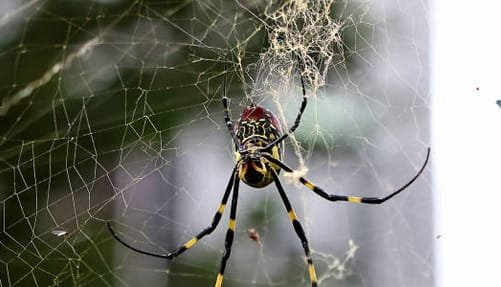What is the significance of this breakthrough?
Researchers at Tufts University have made a major discovery by developing a fluid that turns into a strong, sticky fiber capable of lifting items several times their weight. Inspired by the powers of the comic book superhero Spider-Man, this creative substance opens doors for fresh uses in several spheres.
What inspired researchers to develop these fibers?
Researchers have worked for years on strong fibers that might be useful ropes. The silk secreted by many insects—including moths and spiders—has motivated their endeavors. Until recently, though, it has proved difficult to replicate the special mix of rigidity, elasticity, and adhesive qualities seen in spider silk.
What key discovery was made during the research?

The study team showed in Advanced Functional Materials that a silk moth protein called fibroin could be injected through a small needle to create a strong, sticky fiber when coupled with particular additives. Cleaning glassware with acetone revealed an unexpected result during the study, producing the production of the substance.
How does the gelation process work?
First, when trying to reproduce spider threads, the scientists found that fibroin solutions would change into a semi-solid gel after several hours when exposed to compounds such as ethanol or acetone. But dopamine sped up this solidification process, allowing the virtually immediate formation of high-tensile sticky fibers.
The study team clarified that eliminating water from the dopamine combination accelerates the change of the silk protein from liquid to solid. This new method improves the quality of the material and streamlines the procedure.
How are the sticky fibers formed?
In their tests, the scientists found that when expelled through a specifically made needle, a thin stream of the silk solution, wrapped in a layer of acetone, hardened into a sticky fiber. The fiber showed amazing adhesion, clinging to anything it came across as the acetone evaporated.
How can the strength and adhesiveness of the fibers be enhanced?
By up to 200 times, the researchers found, adding chitosan—a protein derived from insect exoskeletons—increased the tensile strength of the fibers. Moreover, adding compounds like borate buffers increased their adhesiveness almost eighteen fold.
How can the diameter of the fibers be customized?
The capacity of this novel material to be customized in its diameter is among its amazing qualities. Depending on the bore size of the needle used in the procedure, the fibers can be tuned to vary from the thickness of human hair to around half a millimeter.
What are the implications of this research?
From cutting-edge adhesives to creative tethering solutions, this ground-breaking study highlights the potential of silk fibroin as a flexible material and creates fascinating avenues for future uses. Natural inspiration keeps driving scientific progress by bringing to reality things formerly thought possible only in comic books.

